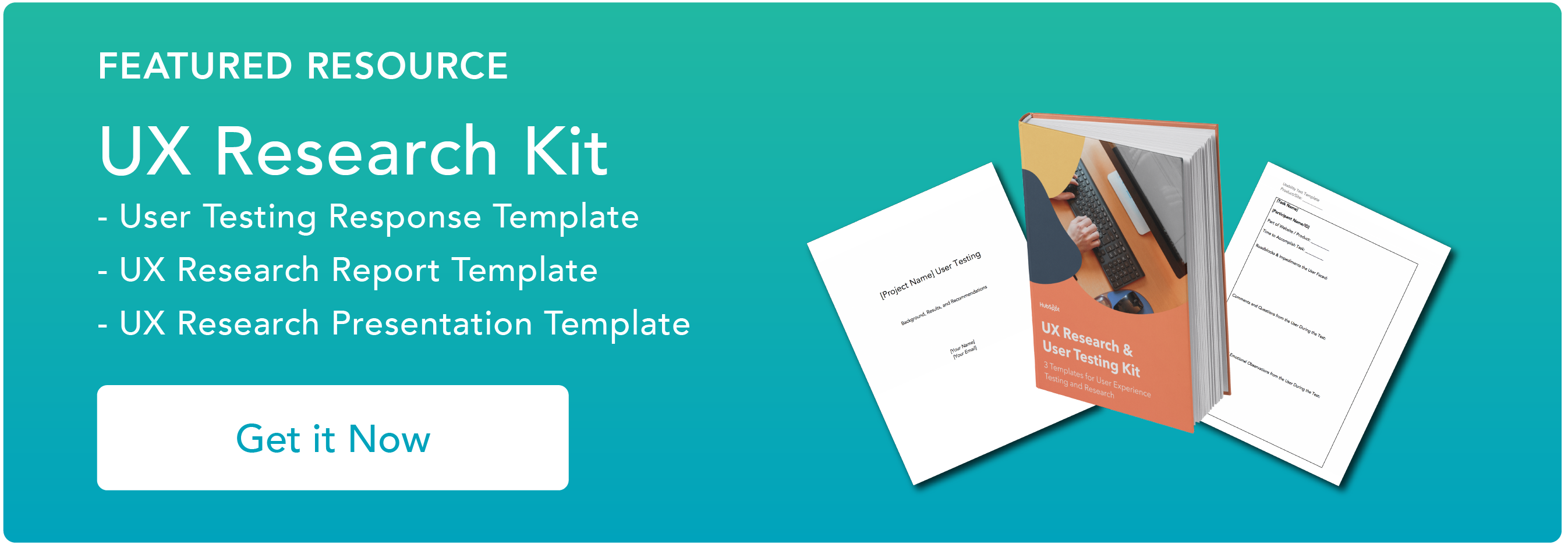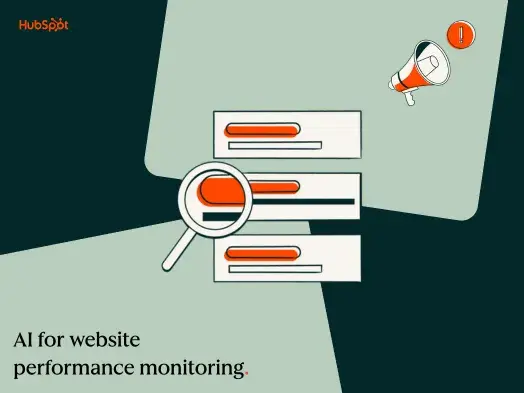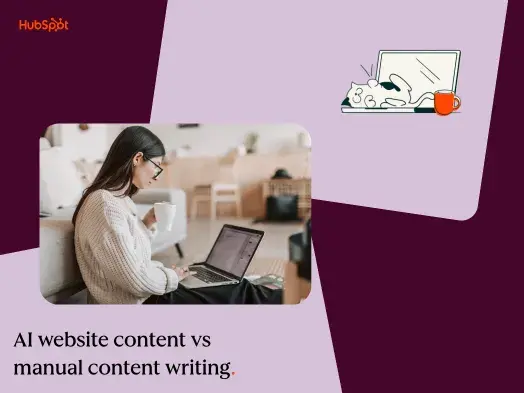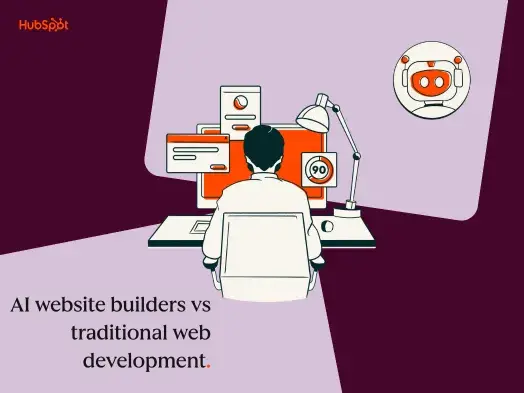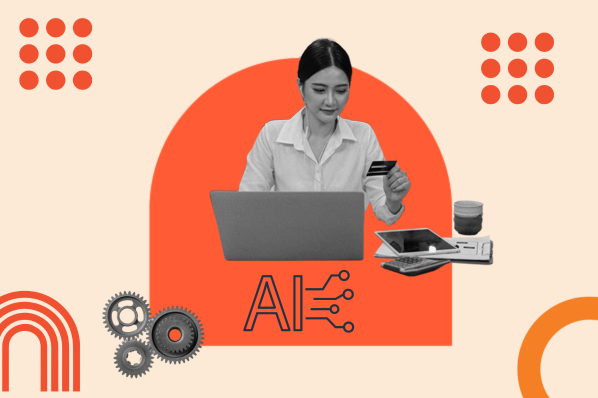I talked to Lindsay Derby, a Design Lead at HubSpot, who regularly leverages AI in her work, to discuss how to get started with AI for UX design. Good news: Lindsay had plenty of learnings to share with you. From the benefits of using AI for UX design to exceptional tools to the technicalities of getting started, I'm here to help make the beginning of your AI journey more straightforward.
What are the benefits of using AI for UX design?
According to Derby, you should use AI for UX design for several reasons. Because AI can help streamline repetitive or tedious tasks, "[it] can really help make sure you are spending your time doing the things you love and that make a bigger impact," says Derby. "Instead of spending a lot of time on one thing, you can rapidly iterate with an AI boost or completely automate mindless tasks like developing placeholder content and sorting through research data."
Another attention-worthy reason UX designers should learn to leverage AI is to create a more personalized experience for folks who land on their sites. With the assistance of AI, you can analyze user behavior and preferences to create personalized user experiences, such as adapting content, layout, and even features. I'm particularly enthusiastic about the prospect of using AI for this purpose, as there's a huge opportunity to create more accessible, inclusive digital products in this way. (If you haven't done so already, I recommend checking out this handy checklist for web accessibility.)
There are other reasons designers should embark on their AI for UX design journey, too. To me, two highlights include the opportunity to streamline data-driven decision-making and to enhance usability. Let me walk you through what I mean.
You're probably already familiar with the importance of making data-driven decisions. McKinsey reports that data-driven companies are 23 times more likely to acquire customers. In other words, being data-driven isn't optional if you want your business to succeed.
That's where AI comes into play. With its assistance, UX designers can efficiently analyze user feedback and data. Because of this, designers are equipped with the knowledge necessary to make design decisions that will align with — or ideally, exceed — user expectations.
Finally, there's the usability factor. With AI, designers quickly gain an understanding of the most pressing pain points users face throughout their journey. Then, designers can leverage those insights to make the right choices for users.
How to Use AI for UX Design: Top Three Tips
If you're convinced that AI for UX design is worthwhile but unsure where to begin, don't panic — Derby has some practical suggestions to help. "I use AI to quickly write dummy content to give me a jumping-off point when I need to create a narrative in my designs," she shares. "I also use it to help me synthesize large amounts of data - like user feedback in spreadsheets, sticky notes from workshops in Figjam, and transcripts from user interviews."
With that in mind, here are some tips for getting started with using AI for UX design.
Start small.
Derby's first tip is a tricky one, but if you're able to master it, you're off to a great start. "This was really hard to do, but try not to be intimidated," Derby suggests. "Look for ways that AI can help your workflow and automate some of your more tedious tasks, rather than starting with huge complex problems."
Once you have a more robust understanding of how the tools work, you can slowly begin to figure out how they can assist with larger portions of your work. But the key to not getting overwhelmed (and consequently, off-put completely) is to start small and build upon your knowledge.
Pro Tip: AI continues to evolve — so don't pressure yourself to learn everything right away. Consider enrolling in a course if you want to completely immerse yourself in the world of AI once you've discovered the basics.
Don't rely on it entirely.
It's 2024, and while we're lucky to have this emerging technology, the reality is that it's not a replacement for human designers. (Want to learn more about that? I've got you covered.)
Derby suggests that you work in conjunction with AI. Instead of viewing it as AI vs humans, think of it as AI and humans. "Leverage it as an ideation engine," says Derby. "Using AI outputs as starting points and combining with your own human ideas is where the magic happens."
If you rely entirely on AI, you will output results that look like everyone else's. The key is to combine your creativity with the technology.
Pro Tip: The more you work with AI tools, the more comfortable you'll get with them — and the more they'll learn about what you're looking for to output better results. For example, the first time I tried to prompt ChatGPT, it yielded many inapplicable results. Now that I've been using the tool for a while, it better understands what I'm looking for.
Figure out which tools you already use have AI baked in.
Here's some great news: Plenty of the tools you already know (and love!) may have AI enhancements you can opt to use. For instance, Content Hub features AI baked in to allow folks to create personalized, engaging sites more easily. Similarly, other tools you're familiar with likely have AI built in, too. "Explore AI enhancements to apps you know and love," Derby shares. "I just discovered AI-powered sorting of sticky notes in Figjam, and it has been so helpful!"
You may even figure out an easier, more streamlined way to use your favorite tool. It's a win-win.
Pro Tip: Ask your peers for AI-powered enhancements they love if you want suggestions.
Best AI Tools for UX Design: 3 Favorites
So, what tools can you use when looking to begin your AI for UX design journey? I have some suggestions to consider.
1. FigJam/Figma
The first is one that Derby mentioned that she loves — a tried-and-true favorite. If you already use Figma, you'll be happy to learn that this tool has AI built in. Because you already know the platform, the learning curve will be less steep. You can use FigJam to allow your team to collaborate in real time, generate templates, and create visual timelines with basic prompting.
2. Uizard
Next up is Uizard, which is another AI-powered tool that UX designers will find helpful. The tool does a variety of things, from wireframing to mockups and prototyping. We all know how time-consuming these tasks can be, but with Uizard, you don't need to do it manually anymore. I'd call that a win.
3. Galileo AI
Finally, we have Galileo AI, which is a UI generation platform that you can use to make design ideation simpler. One of this tool's major strengths is how quick it is — so you don't need to spend a ton of time getting your ideas on the page. Plus, you can choose from text-to-UI or image-to-UI features, so work whichever way is more intuitive to you.
Dive into AI for UX Design
You're well on your way to becoming an AI pro. Remember: AI is evolving every day, so continually educating yourself on new features and products is a great idea. By doing so, you'll find that there are plenty of uses for AI within UX design.
Artificial Intelligence
.png?width=112&height=112&name=Image%20Hackathon%20%E2%80%93%20Square%20(10).png)

.png)
